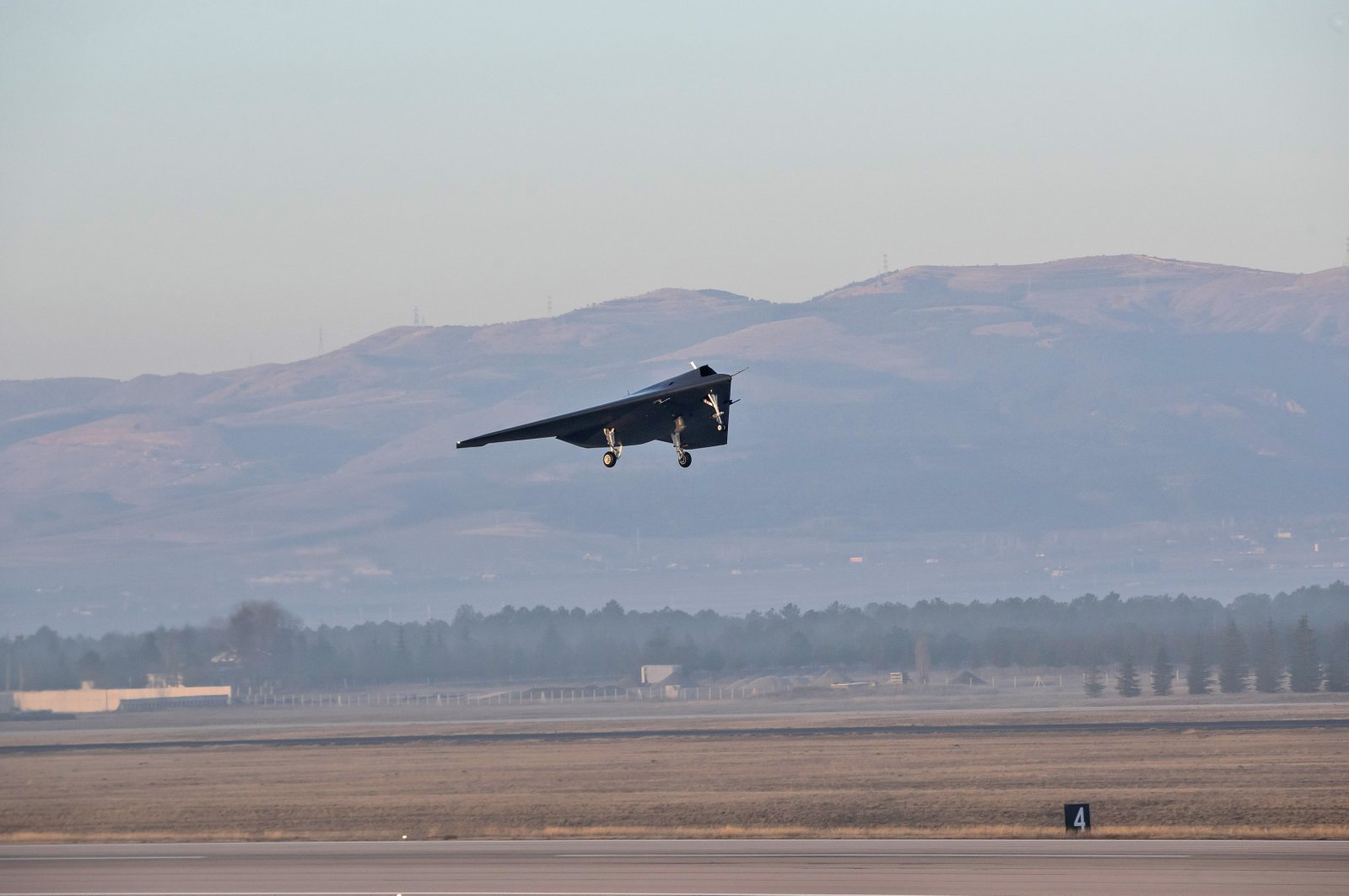The Turkish Aerospace Industries (TAI) Anka 3 flying-wing unmanned combat aerial vehicle (UCAV) made its maiden flight on 28 December. The flight over Ankara lasted for 70 minutes, during which the UCAV reached a height of 8,000 ft. The Anka-3 achieved a speed of 150 knots and also performed a runway overshoot test during the inaugural flight. The existence of a low-observable, jet-powered UCAV was first made public in December 2022. The first taxi tests were performed in April 2023. The drone will be capable of performing different missions such as reconnaissance, surveillance and intelligence, with air-ground munitions, air-to-air ammunition and radar systems.
President Recep Tayyip Erdogan announced on Thursday, the latest addition to the country’s famed homegrown unmanned combat aerial vehicle fleet. Erdogan expressed optimism about the drone’s potential contributions. “Hopefully, our aircraft will make a strong contribution to our country’s defense with its advanced technologies, design, and features,” Erdogan said on social media platform X, formerly known as Twitter.

The Anka-3 is a new flying wing design and stealth technology UCAV jet engine version of the Anka. The drone is named after Phoenix, a mythological creature called Zümrüd-ü Anka in Turkish. The TAI Anka is a family of unmanned aerial vehicles developed by Turkish Aerospace Industries primarily for the Turkish Air Force. Envisioned in the early 2000s for aerial surveillance and reconnaissance missions, Anka has evolved into a modular platform with synthetic aperture radar, precise weapons and satellite communication. TAI states that the Anka 3 uses the same ground systems as its earlier Anka and Aksungur unmanned aerial vehicles (UAVs) for increased commonality.
The UCAV has a maximum takeoff weight of 6.5 tonnes, and a payload capacity of 1,200 kg, cruise speed of 250 kn (460 km/h; 290 mph), maximum airspeed of Mach 0.7 (860 km/h; 530 mph), service ceiling of 12,000 m (39,000 ft), maximum ceiling of 40,000 ft (12,000 m). The prototype of the Anka 3 is powered by a low-bypass turbofan engine.
It is able to carry 650 kg (1,430 lb) of ammunition at each of the two stations inside the fuselage, 650 kg (1,430 lb) of ammunition at each of the wing inner stations, and 100 kg (220 lb) of ammunition at each of the outer stations. The integration of many options can be achieved, from the most commonly used ammunition in today’s UAVs to large ammunition such as Roketsan SOM-J, Mk82 and bunker busters.















